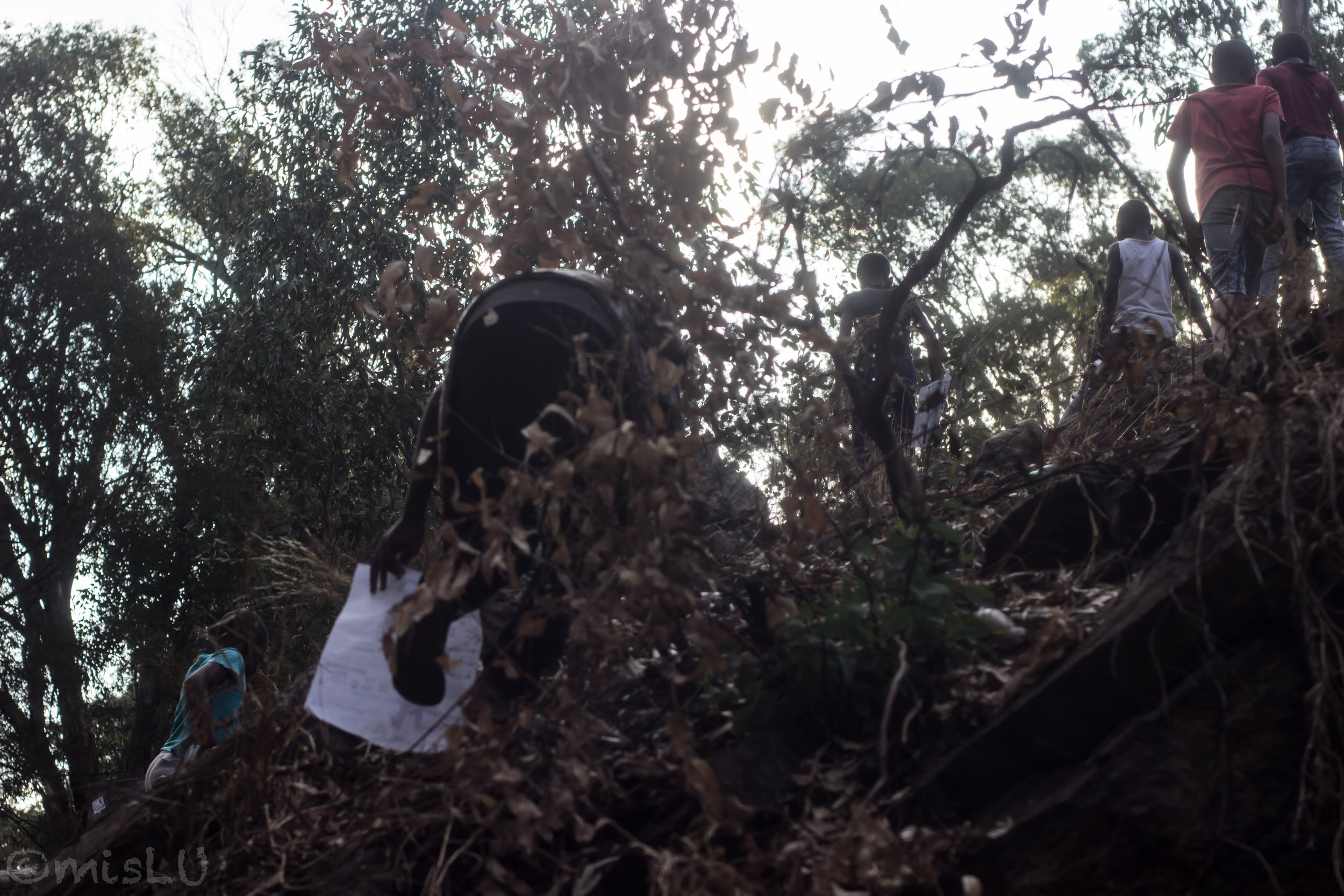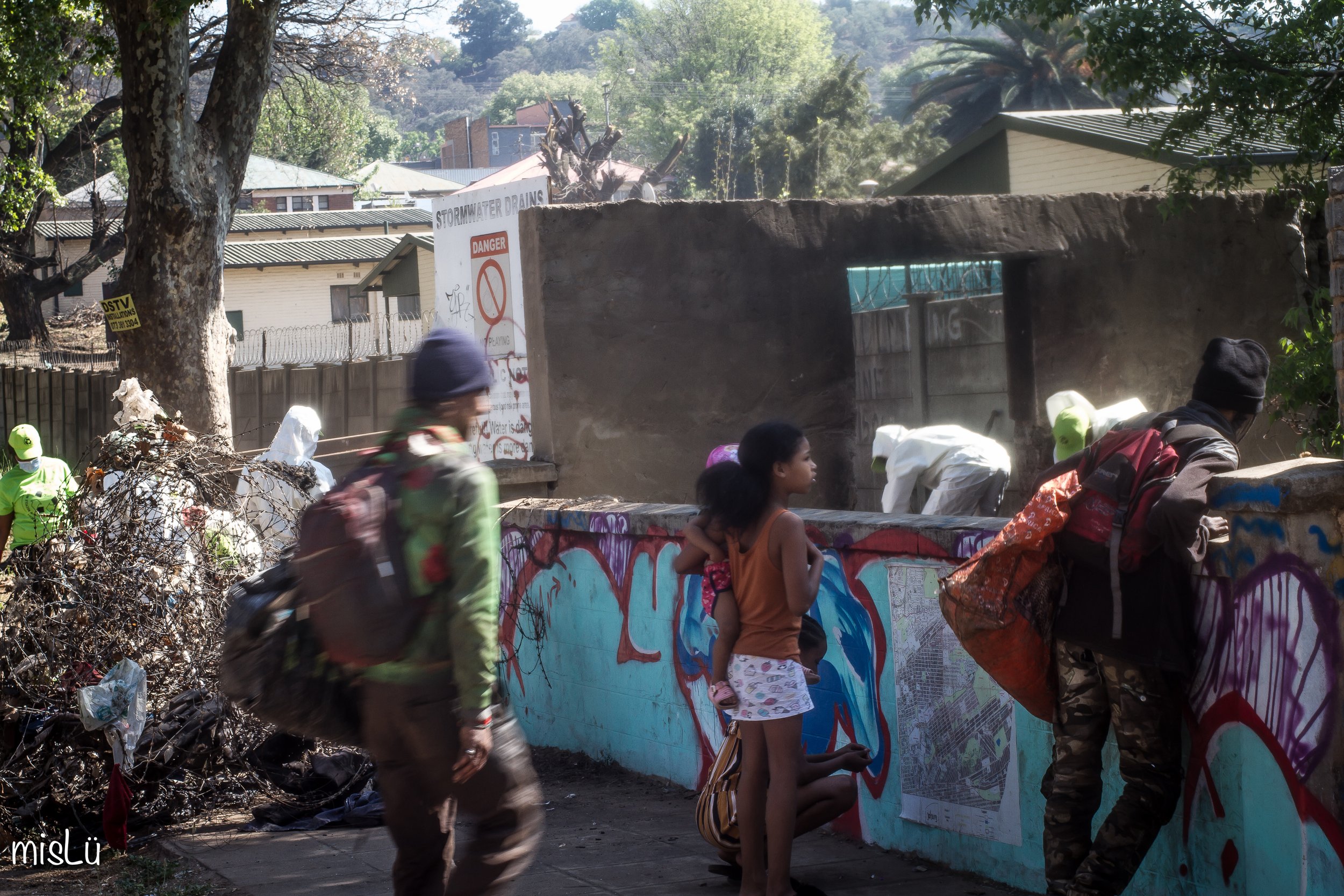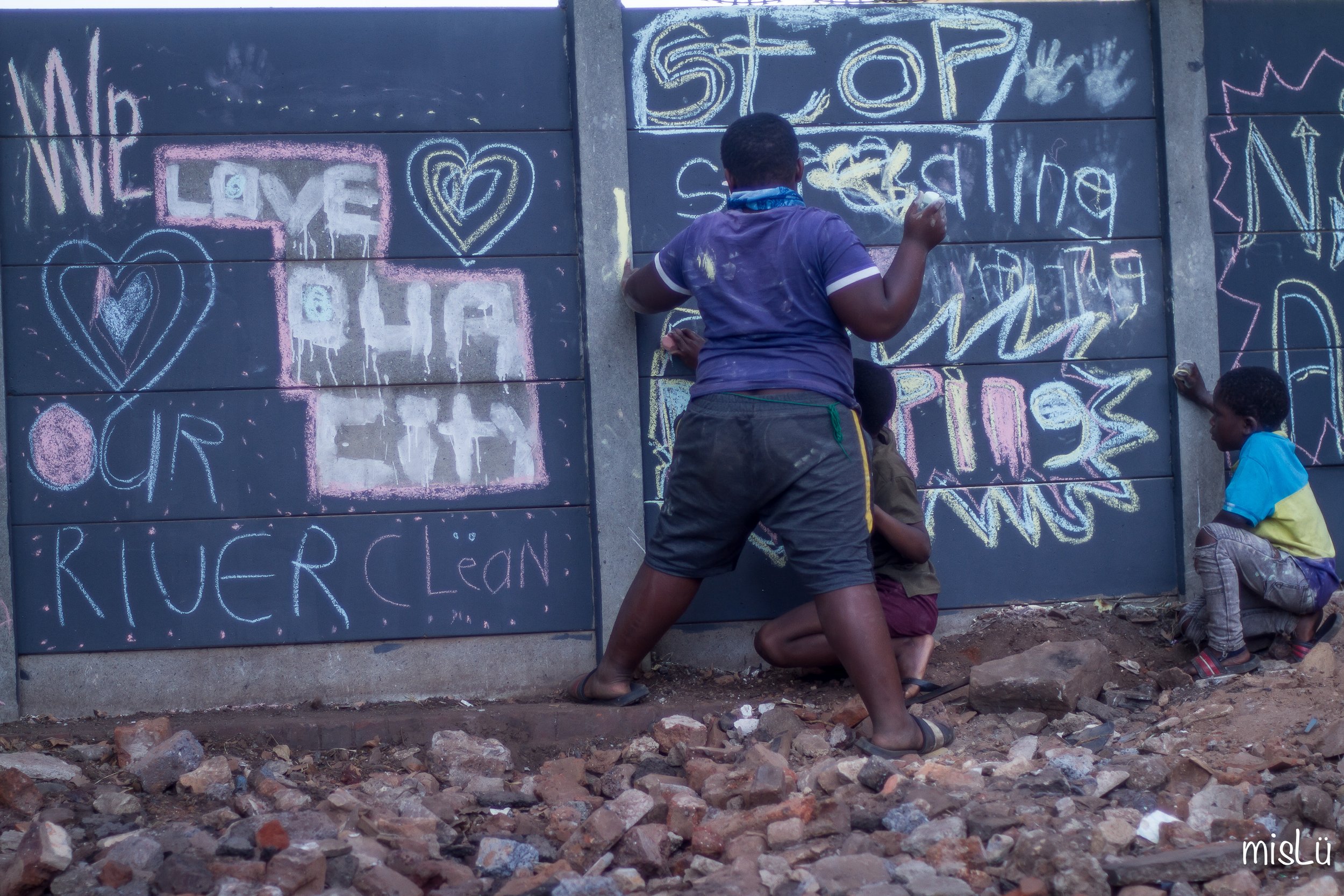
Cleaning-up
Before natural ecosystems can be restored, the riverbanks need to be cleared of alien plants and toxic waste. Water for the Future engages multiple stakeholders in clean-up operations. Our cleaning activity is recorded below.
Invasive Alien Removal
Clearing of the IAPs have enabled access to the river for scientific monitoring of the water, soil and air quality so that plans for the remediation of the water quality, environment and biodiversity can be developed. We have since facilitated the installation of data collection points in and next to the river. Clearing has led to increased security for landowners by effective site management, as well as greatly decreased fire probability.
Clearing of IAPS have also allowed for vital engineering assessments of the culvert to be done, which will guide development of the infrastructural maintenance plan to be co-developed with the City of Johannesburg, landowners and the local community.
An ongoing duty of care towards ecological restoration is clearing the riverbanks of invasive & alien plants (IAPs). Before our removal programme began in late 2020, IAPs had completely taken over the headwater concourse, causing damage to the culvert and providing shelter for dumping and other illegal activity.
An IAP management plan (Liesel Vosloo, 2020) was created for Water for the Future, expanding on the scientific report (Plant Sensitivity Audit by Colleen Rood) which was commissioned in 2018 as part of the comprehensive research into the overall Jukskei River Regeneration Plan. The first great effort to remove IAPS took place during October and November 2020.
WFTF partnered with local conservation organisation Naledi ya Thlago (via Birdlife SA) to perform a bird count of the existing birds prior to the removal programme. Ongoing and future monitoring of bird life will be undertaken especially after indigenous grass-planting stages are implemented throughout the catchment, stimulating as the grasses do, huge leaps in biodiversity.
The removal also serves as a catalyst for engagement with the local community about broader interventions and the socio-economic benefits a clean river can bring to the adjacent neighbourhoods. Read more about the economic potential we advocate and train for in our IAP removal programme.

Toxic waste removal: Heritage Day 2021
Until Heritage Day 2021, the Daylight Point of the Jukskei river was a miserable hotspot for dumping. Building rubble and barbed wire, TV sets, plastic cabling, meat carcasses from local butchers, old carpets, and many other human waste items set a scene topped off as both a drug den and a toilet.
However, in a matter of hours, the entrance and top of the river culverts underwent a massive change when Enviroserv employees in Hazmat suits and a skip removed much of the toxic waste.
From ongoing assessment of the state of daylight point, Water for the Future started discussions with Enviroserv, who have always been very supportive of our program. Their professional sponsorship of time and equipment, and the personal output of enthusiasm from their five workers, have literally opened the area for community-based and government clean-ups to continue.
Next, Water for the Future turned illegal rubble into a new walkway and rockery at the entrance to Daylight Point, which also now features a smart red door that we installed to prohibit further dumping. Sponsored succulents dot the rockery, and an abutting chalkboard-wall has been painted for the neighbourhood children to use for art and ideas.
There are still unsavoury things in the river. With the heat the smell is unbearable, and we look forward to the rains dissolving more detritus. We ultimately need the municipality to thoroughly evacuate the point of waste. At this time, the city is inundated with other emergencies and it isn’t clear when they will prioritise this crucial national site.

Get involved.
Contribute to our cause, become a subscriber, or get information on upcoming projects.




